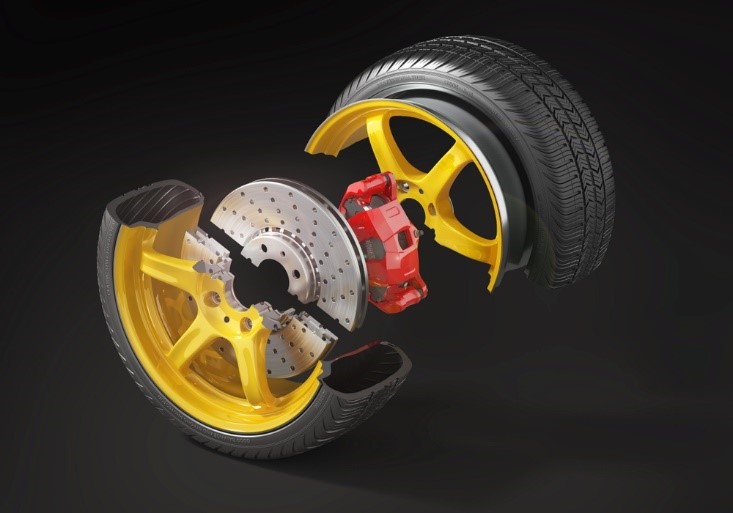Electric and hybrid vehicles are becoming more common on the road, offering drivers efficiency, quiet operation, and cutting-edge technology. However, their braking and alignment systems operate differently from traditional gas-powered vehicles. In this blog, we’ll explore the unique concerns EV and hybrid owners should be aware of and how proper maintenance can keep these advanced systems performing at their best.

Regenerative Braking Changes Wear Patterns
One of the biggest differences in electric and hybrid vehicles is regenerative braking. Instead of relying solely on traditional brake pads and rotors, these vehicles convert braking energy into electricity to recharge the battery. While this reduces wear on brake components, it also means brakes may go unused for long periods, leading to corrosion or uneven wear. Regular inspections are key to preventing surprise brake issues.
Heavier Battery Packs Affect Alignment
Electric and hybrid cars typically weigh significantly more due to their large battery packs. This added weight puts increased stress on suspension and alignment systems. Even minor potholes or road impacts can push alignment out of spec more quickly than on lighter vehicles. Misalignment not only affects tire wear but can also reduce handling precision—something EV drivers rely on for smooth, controlled performance.
Instant Torque Can Increase Tire Wear
Electric vehicles are known for their instant torque, delivering rapid acceleration with no delay. While fun and efficient, this immediate power can put extra strain on tires, causing them to wear faster than expected. When tires wear unevenly, alignment issues often follow. Regular alignment checks help ensure even tire contact with the road and extend the lifespan of your EV’s tires.

Specialized Brake Components Require Professional Care
Many electric and hybrid models use advanced braking systems with electronically controlled components. From brake boosters to electronic brake-force distribution modules, these systems require specialized knowledge and tools to service correctly. Traditional brake shops may miss issues unique to EV technology, making it important to choose technicians who understand these advanced systems.
Related: Why Regular Car Tune-Ups Are Important in Cold Weather
Trust the Experts for Your EV Brake & Alignment Needs
Electric and hybrid vehicles offer impressive efficiency and performance, but they also come with distinct brake and alignment needs that require proper care. Staying ahead of these concerns ensures safer driving, longer component life, and overall better performance from your EV or hybrid. For expert brake service and precision alignments you can trust, visit Mike’s Brake & Alignment Shop. Contact us today at (817) 834-2725 or learn more at mikesautospa.com.





